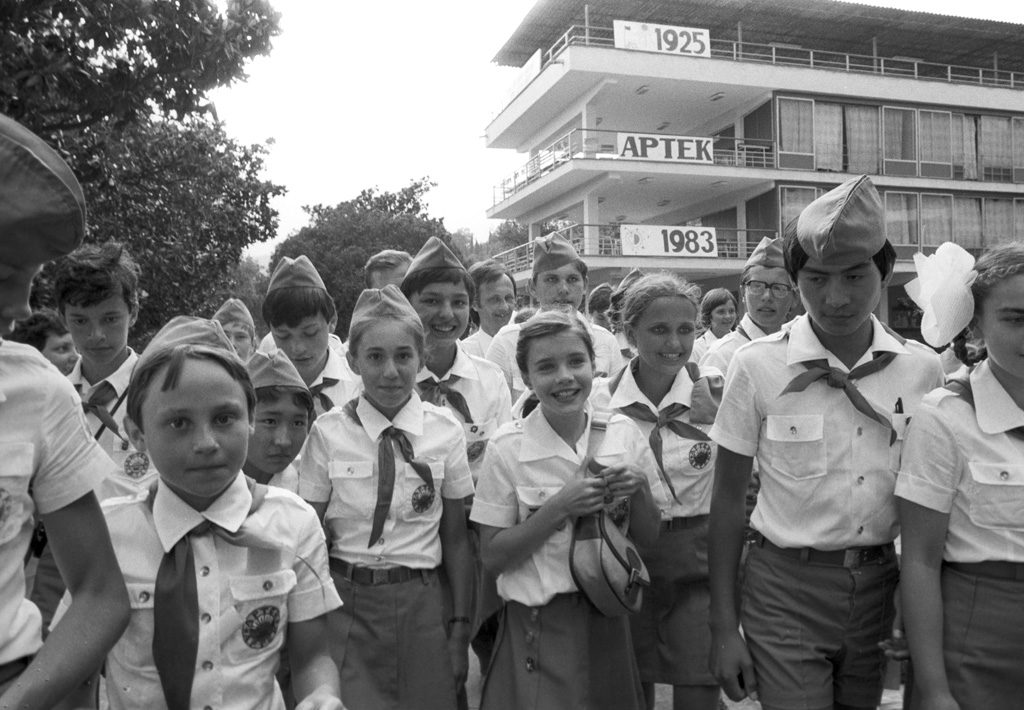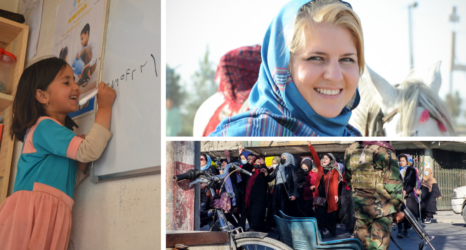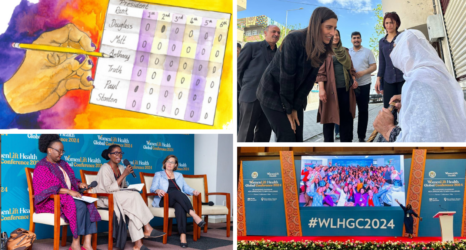What if I told you that a little girl from Maine was one of America’s most successful ambassadors during the height of the Cold War arms race in the 1980s? That her bravery and audacity spurred understanding and sympathy between the people of Russia and the United States— leading to the Intermediate-Range Nuclear Forces (INF) Treaty, which effectively ended the Cold War 32 years ago?
History infrequently takes the contributions of women, not to mention girls, seriously—so if you weren’t around in the 1980s, you’ve probably never heard of Samantha Smith.

Samantha’s story begins five years before the treaty, in 1982, when she, like most of America, was terrified at the thought of nuclear war with the Soviet Union. Her mother encouraged her to write a letter to then-leader of the Soviet Union, Yury Andropo, to help her process and act on her fear in a healthy way.
Dear Mr. Andropov,
My name is Samantha Smith. I am ten years old. Congratulations on your new job. I have been worrying about Russia and the United States getting into a nuclear war. Are you going to vote to have a war or not? If you aren’t please tell me how you are going to help to not have a war. This question you do not have to answer, but I would like to know why you want to conquer the world or at least our country. God made the world for us to live together in peace and not to fight.
Sincerely,
Samantha Smith
Much to everyone’s surprise, the letter was published in a Soviet paper in April of 1983, and Samantha received a personal response from Andropov inviting her and her family to the Soviet Union. That July the whole world seemed to follow her trip. She was hailed “America’s Youngest Ambassador.”
Through her television appearances on the Tonight Show with Johnny Carson, daytime talk shows, and a special called “Samantha Smith Goes to Washington: Campaign ’84” , Samantha repeated that the Soviets were nice people, just like Americans, who didn’t want nuclear war. This was in total contradiction to how President Reagan characterized the Soviet Union as an “evil empire” and “the focus of evil in the modern world.”
The reverse was true as well; the people of the Soviet Union saw a new side of America through Samantha Smith’s graciousness, intelligence, and peaceful nature. At a peace conference in Japan, she proposed that “U.S. and Soviet leaders exchange granddaughters for two weeks every year, because a leader would not want to bomb a country that ‘his granddaughter was visiting.’” Samantha Smith’s activism and diplomacy gave Americans and Soviets hope that things could get better.
Thirty-two years later, we find ourselves back to where we started before Samantha Smith wrote Mr. Andropov that letter. President Trump withdrew from the INF Treaty this year, leaving crucial checks on Russia’s nuclear weapons production off the table.
Samantha’s groundbreaking activism should be a clear sign to national security experts, nuclear policy wonks and everyone concerned about the threat of nuclear annihilation that no voice is too small to make a difference.
Samantha’s story started with her mother, Jane, taking her fear and need for action seriously. Instead of belittling her, she suggested she write a letter to the Soviet leader. We should all work to be like Jane—she had the opportunity to act as a gatekeeper, but chose to encourage her daughter to stand up for what she believed in—and it ended up changing the world. Though her life was cut short in a tragic plane accident at the age of 13, her legacy lives on in the groundswell of youth activists who are fighting today’s largest and most existential issues like never before.
Greta Thunberg is the new face of climate change activism. Malala Yousafzai is a symbol of hope for girls around the globe seeking education. Emma González is leading the charge to protect schools from gun violence. Naysayers will argue that young activists are a part of shadow organizations, crisis actors or puppets of their parents in order to invalidate their experiences and opinions. The internet and the chaos of social media amplifies these voices in harmful ways.
But what if instead of assuming wild conspiracy theories and controlling parents, we assume that children and teens are capable of seeing new solutions and perspectives to old problems? That, by nature of their youth, they have not yet conceded that “that’s just the way it is” is an acceptable answer?
We talk about the importance of women-led movements, but let’s not forget that girls have their own place in this fight—front and center.





